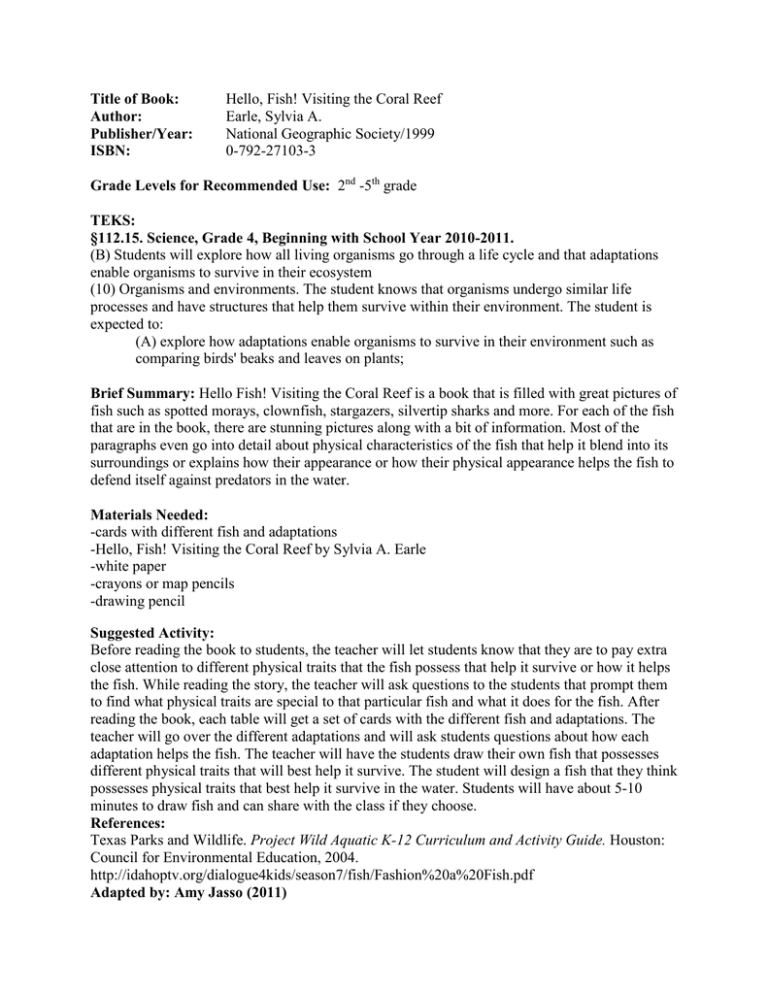Adaptations
advertisement

Title of Book: Author: Publisher/Year: ISBN: Hello, Fish! Visiting the Coral Reef Earle, Sylvia A. National Geographic Society/1999 0-792-27103-3 Grade Levels for Recommended Use: 2nd -5th grade TEKS: §112.15. Science, Grade 4, Beginning with School Year 2010-2011. (B) Students will explore how all living organisms go through a life cycle and that adaptations enable organisms to survive in their ecosystem (10) Organisms and environments. The student knows that organisms undergo similar life processes and have structures that help them survive within their environment. The student is expected to: (A) explore how adaptations enable organisms to survive in their environment such as comparing birds' beaks and leaves on plants; Brief Summary: Hello Fish! Visiting the Coral Reef is a book that is filled with great pictures of fish such as spotted morays, clownfish, stargazers, silvertip sharks and more. For each of the fish that are in the book, there are stunning pictures along with a bit of information. Most of the paragraphs even go into detail about physical characteristics of the fish that help it blend into its surroundings or explains how their appearance or how their physical appearance helps the fish to defend itself against predators in the water. Materials Needed: -cards with different fish and adaptations -Hello, Fish! Visiting the Coral Reef by Sylvia A. Earle -white paper -crayons or map pencils -drawing pencil Suggested Activity: Before reading the book to students, the teacher will let students know that they are to pay extra close attention to different physical traits that the fish possess that help it survive or how it helps the fish. While reading the story, the teacher will ask questions to the students that prompt them to find what physical traits are special to that particular fish and what it does for the fish. After reading the book, each table will get a set of cards with the different fish and adaptations. The teacher will go over the different adaptations and will ask students questions about how each adaptation helps the fish. The teacher will have the students draw their own fish that possesses different physical traits that will best help it survive. The student will design a fish that they think possesses physical traits that best help it survive in the water. Students will have about 5-10 minutes to draw fish and can share with the class if they choose. References: Texas Parks and Wildlife. Project Wild Aquatic K-12 Curriculum and Activity Guide. Houston: Council for Environmental Education, 2004. http://idahoptv.org/dialogue4kids/season7/fish/Fashion%20a%20Fish.pdf Adapted by: Amy Jasso (2011)



